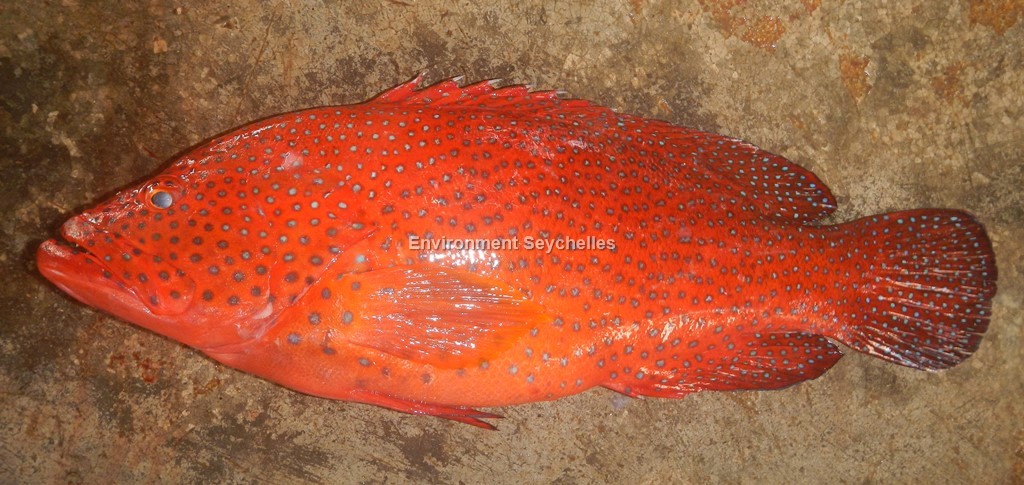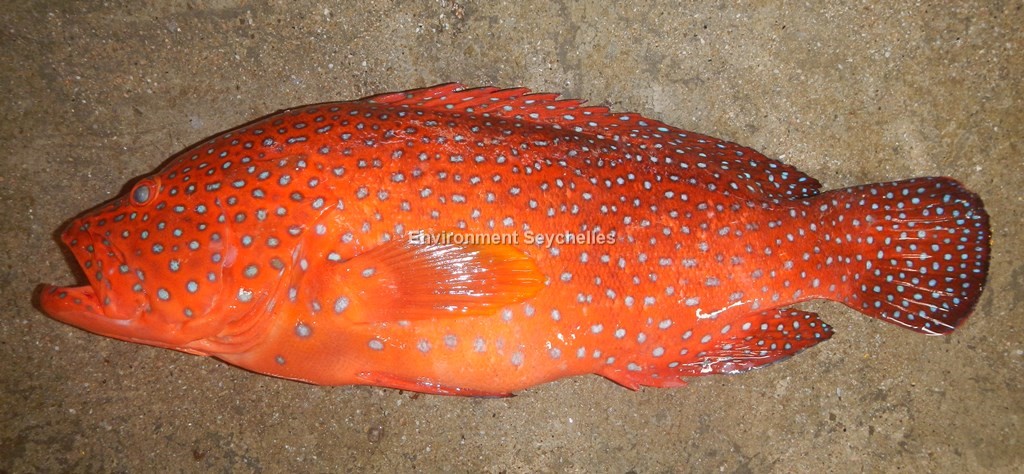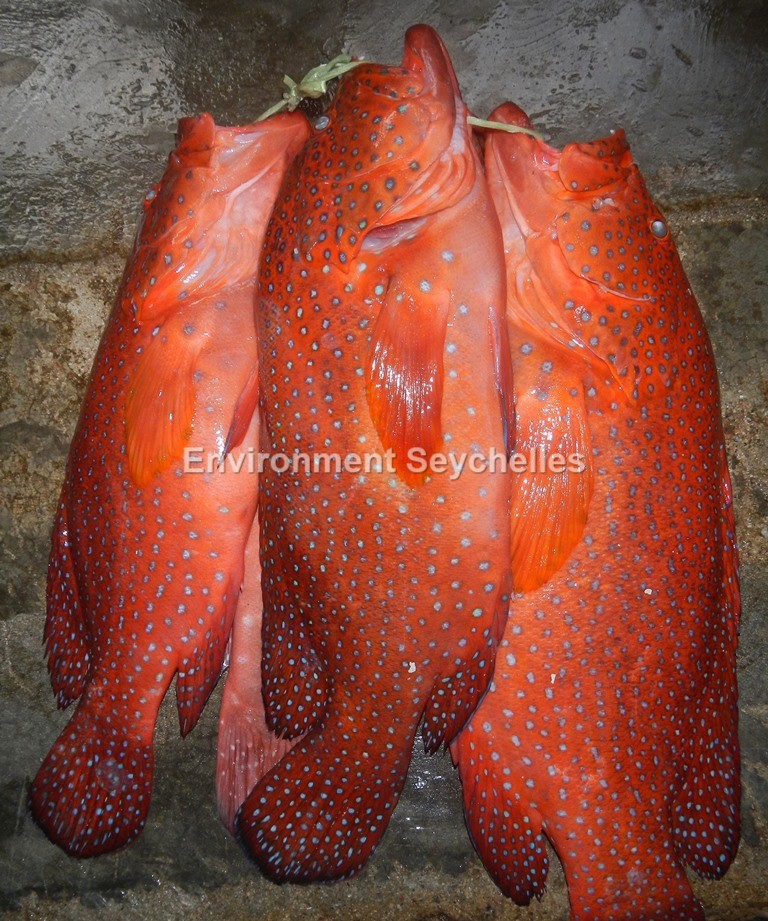Description:
Dorsal spines: 9; Dorsal rays: 14-16; Anal spines: 3; Anal soft rays: 8-9.
The maxilla extends to or posterior to rear of the orbit.
Body bright orange-red to dark red, becoming darker posteriorly, with numerous, usually dark-edged, bright blue spots on head, body and median (non-paired) fins.
Juveniles are more yellowish with faint pale blue spots. Soft dorsal, caudal and anal fins often have a narrow blue margin and blackish submarginal line.
Size:
Maturity: Lm ?, range 26 - ? cm. Max length : 50.0 cm TL
Habitat and Ecology:
Inhabits clear waters on coral reefs (depth 2-150 m) more often in exposed rather than protected reef areas. Feeds on small fish and crustaceans. Forms haremic groups
comprising of a dominant male and 2 to 12 females that occupy territories of up to 475 m2 the females defending smaller territories within that area.
Fishery Status:
This species is not protected or subject to fishery regulations. It is caught in the hand line and fish trap fishery. It is a frequent but not abundant component of the catch.
Notes:
References:
Craig, M.T. et al. (2011). Groupers of the World - a field and market guide. NISC (Pty) Ltd, South Africa. ISBN: 978-1-920033-11-8
Froese, R. & D. Pauly. (Eds.) (2019). FishBase. https://www.fishbase.de/summary/6450 (02/01/19).
Heemstra P & Heemstra, E. (2004). Coastal Fishes of Southern Africa. NISC SAIAB. ISBN: 1-920033-01-7.
Nevill, J. (2013). A Species Identification Guide for Commonly Caught Fish in the Seychelles Near-Shore Artisanal Fishery. GOS/UNDP/GEF.
Rocha, L.A. (2018). Cephalopholis miniata. The IUCN Red List 2018: http://dx.doi.org/10.2305/IUCN.UK.2018-2.RLTS.T132732A100455926.en. (02/01/19)
Citation:
Nevill, J.E.G. (2019). Cephalopholis miniata, Coral hind. Seychelles Seatizens. www.seatizens.sc. https://seatizens.sc/species/cephalopholis-miniata-valenciennes-1828/ (edited 24/07/22).




This is one awesome post.Really looking forward to read more. Keep writing.
ngagao
tbm5j3
m374dp
mj4rg2
Thanks-a-mundo for the article.Really thank you! Awesome.
A big thank you for your blog article.Really thank you! Keep writing.
Appreciate you sharing, great article.Much thanks again. Really Great.
I really like and appreciate your post.Really thank you! Really Great.
Fantastic article.Really looking forward to read more.
Very good article.Thanks Again. Awesome.
Thanks for the post.Thanks Again. Great.
Very informative blog.Really thank you! Really Great.
Very good blog post.Really looking forward to read more. Fantastic.
Great article post.Much thanks again.
Thanks-a-mundo for the blog post.Really looking forward to read more. Will read on…
I am so grateful for your blog.Really looking forward to read more. Fantastic.
A big thank you for your article. Cool.
I am so grateful for your blog.Much thanks again. Fantastic.
wow, awesome blog.Thanks Again. Want more.
I value the blog post. Much obliged.
I think this is a real great blog post.Thanks Again.
Very good article post.Really thank you! Really Great.
I appreciate you sharing this blog.Really looking forward to read more. Awesome.
7ack1z
Great article.Really looking forward to read more. Great.
Thanks-a-mundo for the article.Really thank you! Want more.
Really appreciate you sharing this article.Really looking forward to read more. Much obliged.
A round of applause for your blog article.Thanks Again. Really Cool.
I value the post. Cool.
Muchos Gracias for your blog.Much thanks again. Fantastic.
Say, you got a nice blog article. Fantastic.
Great article post.Thanks Again. Want more.